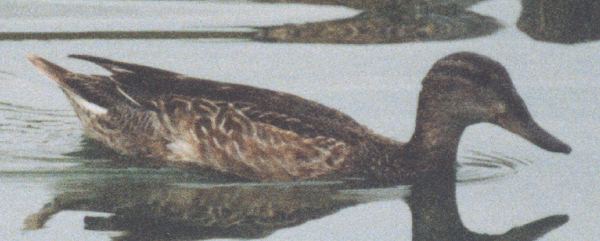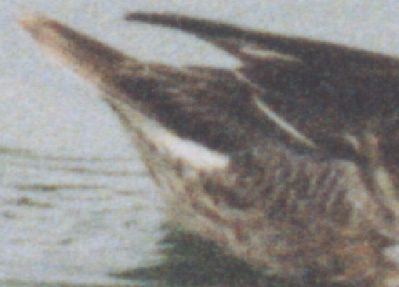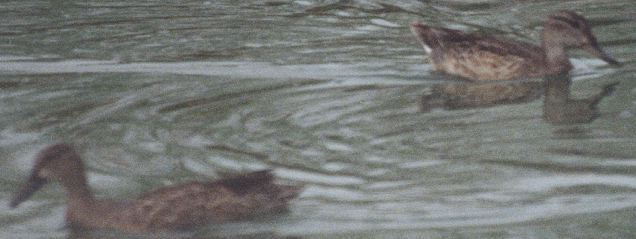
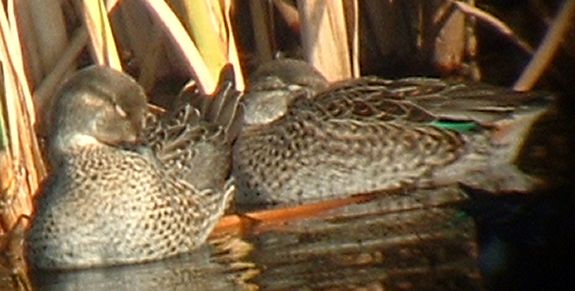

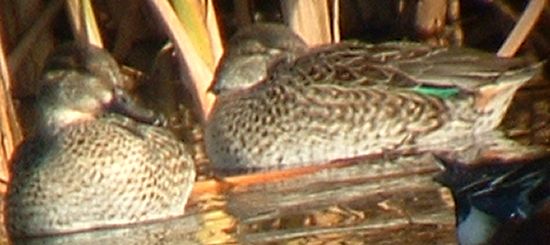
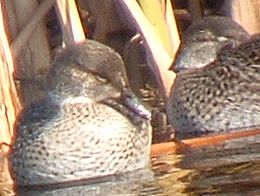
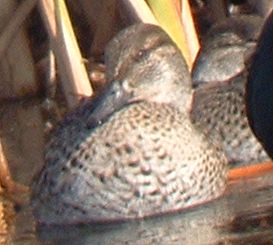
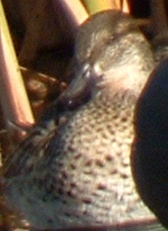
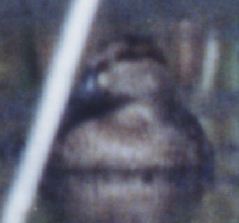
C) Early February; note the dark bar on the lower auricular,
and the very rich cinnamon color of the bar above the speculum
formed by the greater covert tips :
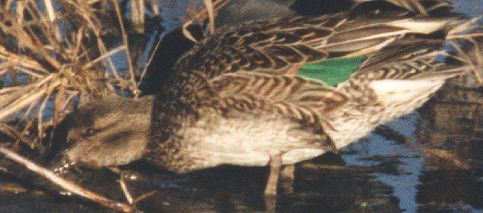
D) April; I've received some opinions that this is a female BW Teal: I can assure you that it is not; the male BWT in the foreground was accompanied by a female, and while this individual was almost the size of a BWT the dark gray wing coverts, white patches on the lateral rump, etc. rule out female BWT. Note the isolated "bill spot" and apparent
gray uppertail coverts (except for the last row which are mostly
dark-centered) - a supposed feature of Baikal Teal. Also note that in the first image, there is the suggestion that the join between the green and black on the speculum is angled (as in Baikal) - but this is inconclusive:

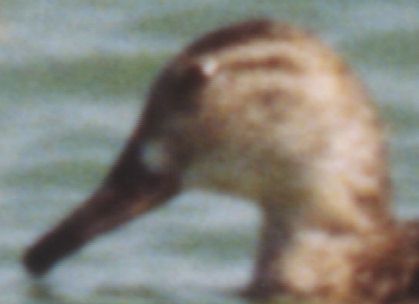
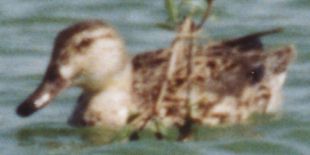

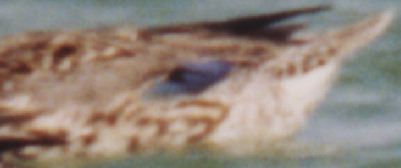
E) Late February; note the extensive warm chestnut wash on
the breast - I believe that this is mostly due to staining:
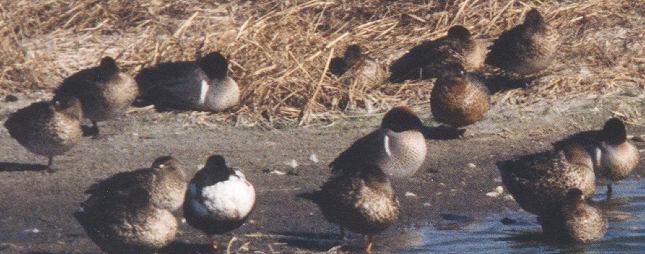
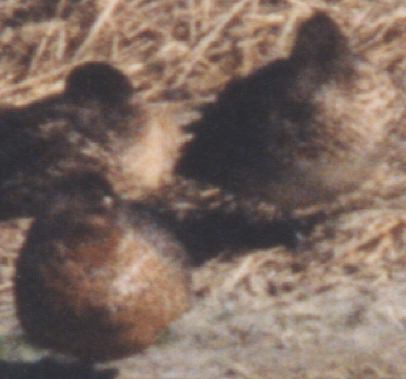
F) Mid-February; note the warm chestnut dappling on the breast (again likely due to staining),
the face pattern, and the wing pattern (trailing white edge at
least as wide as leading white edge on the speculum):
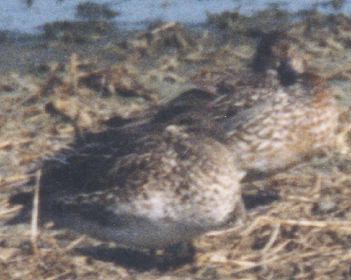
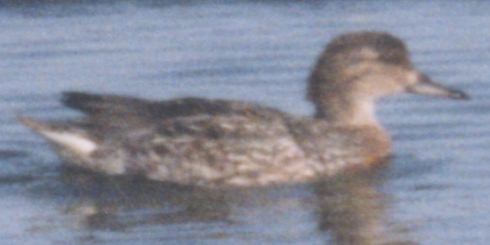
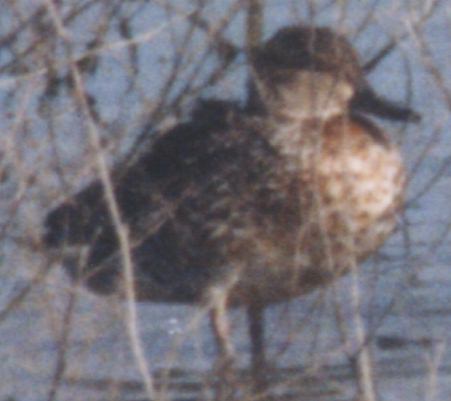
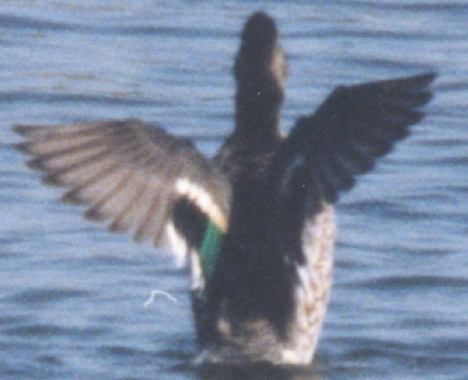
Early March at Port Aransas, Texas; a selection of individuals:
G) - on this first bird do the median coverts indicate that this
is a imm. male???:
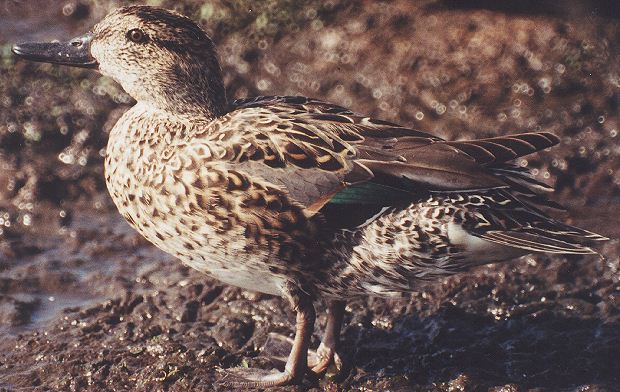
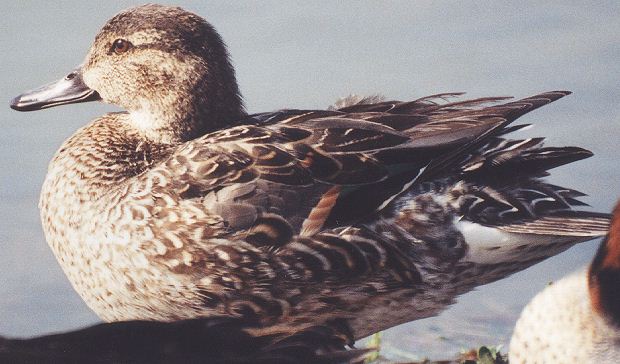
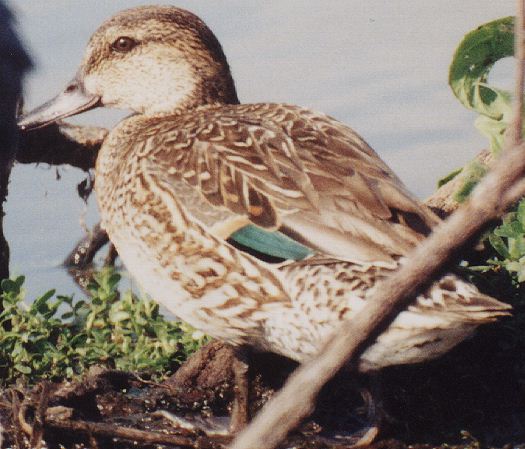
H) on the following (different) bird the trailing white edge to the speculum
is slightly wider than the leading edge:
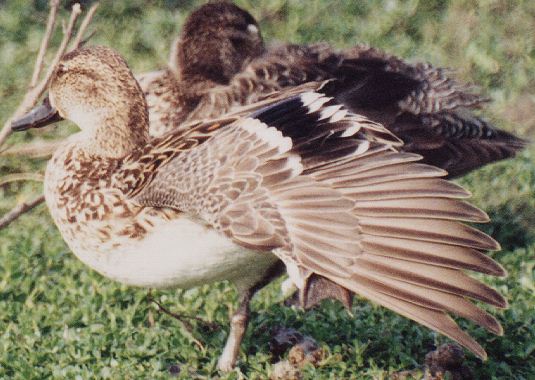
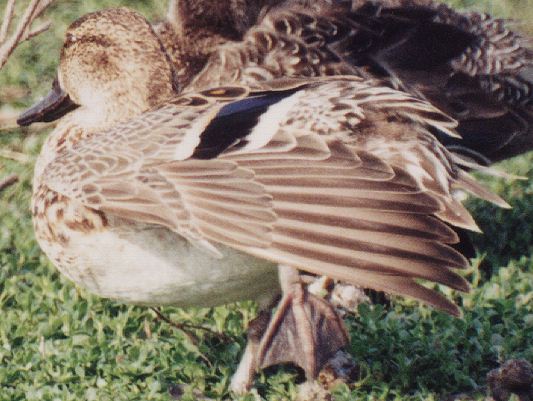
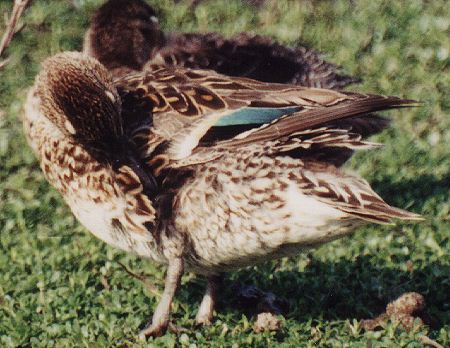
I)
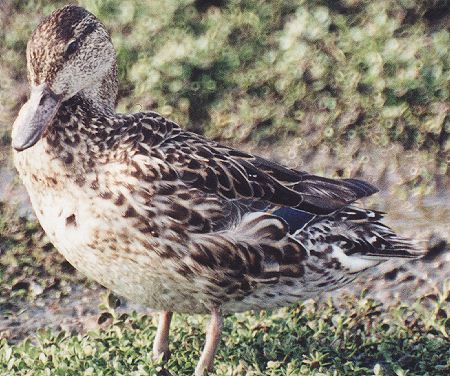
J)
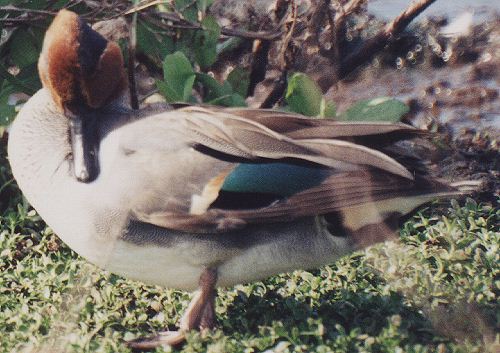
K) July near Nome, Alaska (photo by Fred and Beverly Barnett);
this is the most extreme facial pattern I've seen on carolinensis:
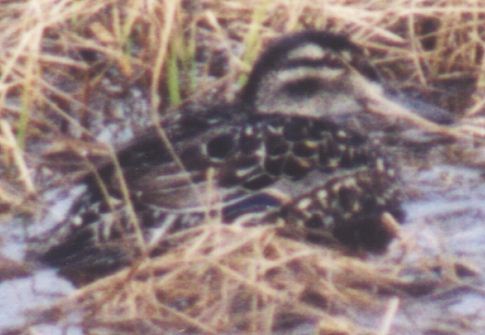
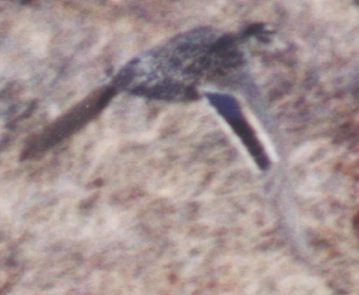
L) Mid-April; note the "bill spot":
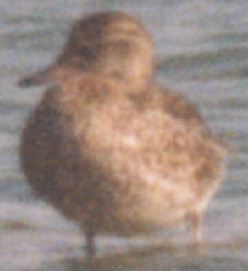
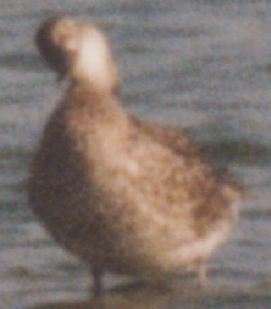
M) Mid-January; note the dark horizontal bar on the lower auriculars:
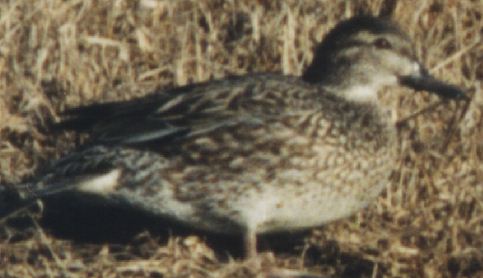
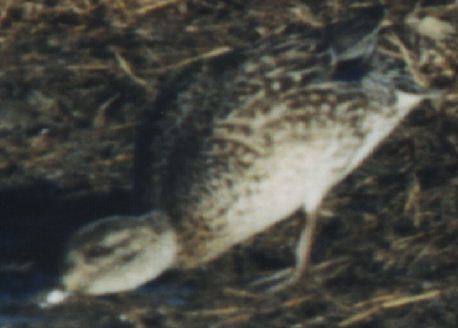
N) Mid-February; note the apparent lack of the white lateral
line by the tail, plus the "bill spot" almost isolated
by a darker smudge:

O) April; note the complete lack of white lateral lines at
the tailbase, and the elongated look to the bill/forehead:
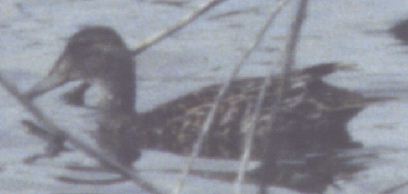
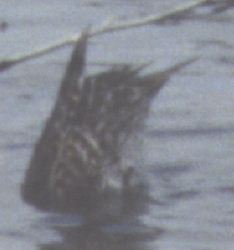
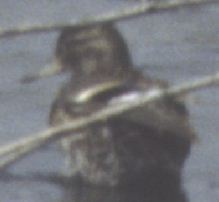
O) September; note the "bill spot":
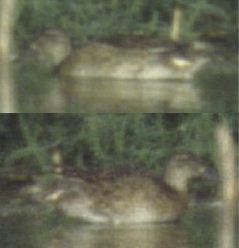
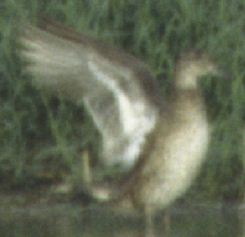
P) Early March; this is probably an immature male carolinensis, but it does somewhat recall a nominate
crecca? - in the field it was apparent that the tail was
noticeably paler than on the normal female birds, and the upper
white bar to the speculum was creamy with no inner buffy or cinnamon
(but I have seen some otherwise normal carolinensis that
have lacked this):
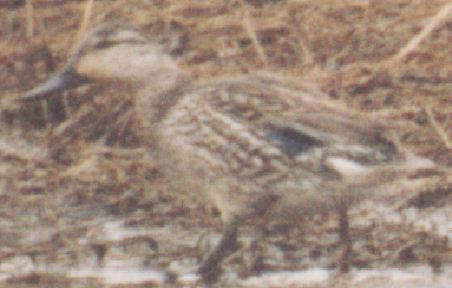
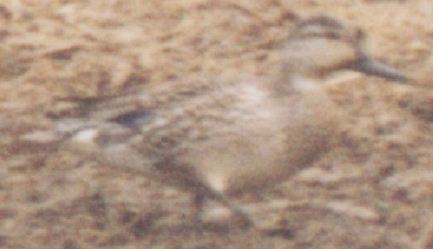
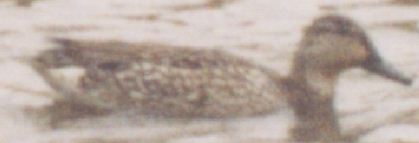
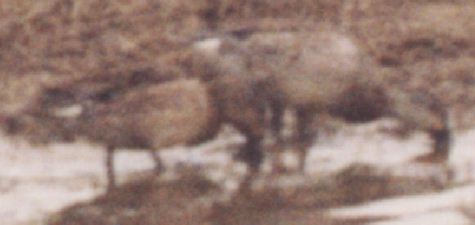


Q) Early September; note the bulge in the bill base, plus the
vermiculations on the flanks near the rump, indicating an eclipse
male - perhaps this is why it shows gray uppertail coverts but
with the distal two rows solidly blackish - this utc pattern has
been associated with Baikal Teal:
